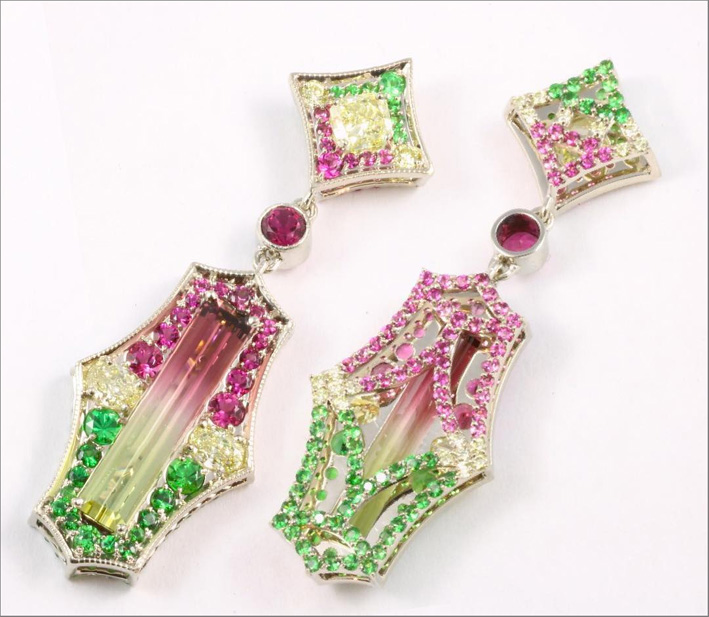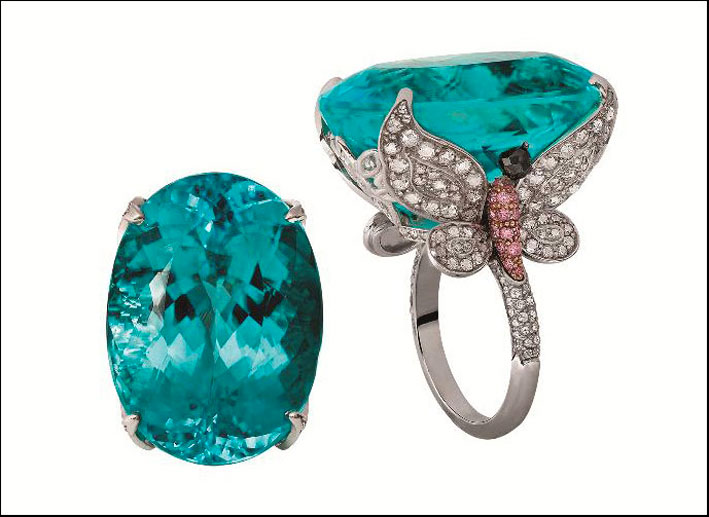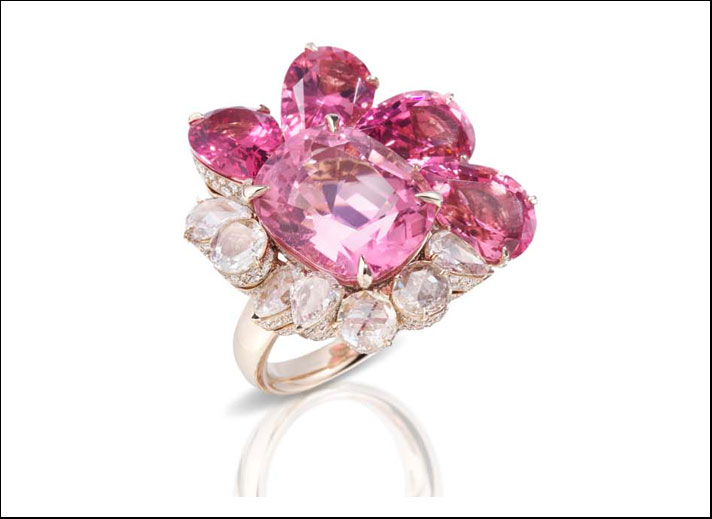Everything you need to know about tourmaline, increasingly fashionable in jewelry ♦
You may have noticed it: for some years now tourmaline, and in particular the Paraiba variety has become the star of jewelry. Few, however, really know this stone, which can take on different colors and which is often confused with other gems. Tourmaline began its rise in the late 1980s, when the brightly colored variety was discovered in the mines of Paraíba, Brazil. These tourmalines, in blue and green shades, were immediately successful. Prices for this stone have risen rapidly to over $ 10,000 per carat. But, be careful: the red stones that are presented with the name of rubellite are also tourmalines.

Composition. According to the chemistry, tourmalines are a crystalline composition of boron mineral silicate, with elements of aluminum, iron, magnesium, sodium, lithium, or potassium. It is a semi-precious stone. Before the name tourmaline became common, this gem was also called the Sri Lankan Ceylonese magnet. This stone, in fact, has pyroelectric properties: it forms a temporary accumulation of electric charges of different sign on opposite ends in response to a change in temperature. But don’t worry: the wearer doesn’t get shocked. In the past, however, thanks to this property, tourmalines have been used by chemists to polarize light.

The name. Tourmaline is a word that derives from the Tamil and Sinhalese language Turmali, used for various precious stones found in Sri Lanka. In recent centuries, large quantities of tourmalines have been exported to Europe from the Dutch East India Company from this country to southern India.

Colors. Tourmaline takes on a great variety of colors. However, the stone discovered in the Brazilian states of Minas Gerais and Bahia is a unique variety with bright colors, blue and green. The largest in the world weighs 191.87 carats and has been included in the Guinness Book of Records. But there are also red, pink, blue tourmalines, and even a variety called watermelon, that is watermelon, with shades that fade from intense pink to olive green. There is also the bright green tourmaline from Tanzania, which contains chromium (the same mineral that colors the emerald). On the market there are also yellow tourmalines, sometimes known as canary tourmaline. Zambia is rich in red and yellow tourmalines, which are relatively inexpensive. By a strange coincidence, the rarest variety, the colorless achroite, is not appreciated and is inexpensive. Tourmalines are also found in Afghanistan and the United States. The deposits in Maine tend to produce mint-green or pink-raspberry red crystals. California deposits are known for a bright pink color, but also two-tone. The most common tourmaline, however, is called schorl, black colored sodium iron.

Beauty treatment. There are many tourmalines that are subjected to special treatments to improve their color. In particular, the pink and red colored buds are often heated at high temperatures to make the color more pleasant. For example, stones with a very dark red color can be made brighter with heat treatment. The pink color, on the other hand, can be significantly increased by irradiation with gamma rays or electron beams. But radioactivity does not remain in the stone, rest assured. Among other things, you will never know: the irradiation process is almost impossible to detect in tourmalines and currently does not affect its value. Tourmaline varieties such as rubellite and Paraiba are also sometimes improved to make them clearer and brighter. But a tourmaline that undergoes this treatment is worth less than a natural gem of the same type.

Where is it. There is not only Brazil. In the late 1990s tourmaline containing copper was found in Nigeria. Tourmaline has also recently been discovered in Mozambique, very similar to that of Paraiba. For this reason, tourmaline from the African country is often called paraiba, but it is a mistake (sometimes desired): in reality the colors of the Mozambican stone are often a little less bright than the Brazilian one. In addition, African tourmaline also costs much less.

















